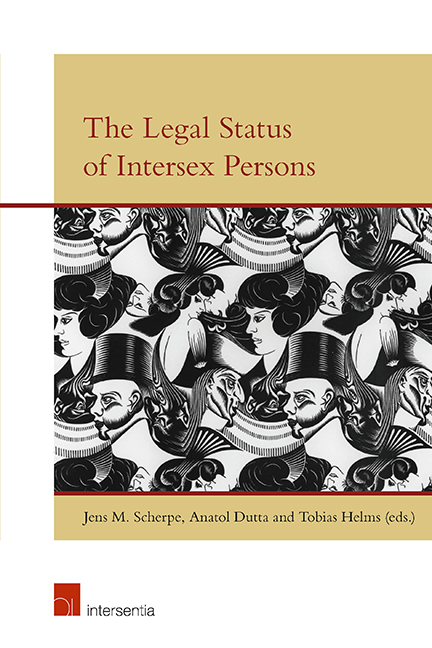Book contents
- Frontmatter
- Preface
- Contents
- List of Contributors
- The Legal Status of Intersex Persons: An Introduction
- Malta Declaration
- Darlington Statement
- Vienna Statement
- PART I MEDICINE AND PSYCHOLOGY
- PART II THEOLOGY AND LEGAL HISTORY
- PART III TRANSGENDER, TRANSSEXUALITY AND INTERSEX
- PART IV NATIONAL LEGAL DEVELOPMENTS
- PART V PRIVATE INTERNATIONAL LAW ASPECTS OF INTERSEX
- PART VI INTERSEX AND HUMAN RIGHTS
Malta Declaration
Published online by Cambridge University Press: 31 January 2019
- Frontmatter
- Preface
- Contents
- List of Contributors
- The Legal Status of Intersex Persons: An Introduction
- Malta Declaration
- Darlington Statement
- Vienna Statement
- PART I MEDICINE AND PSYCHOLOGY
- PART II THEOLOGY AND LEGAL HISTORY
- PART III TRANSGENDER, TRANSSEXUALITY AND INTERSEX
- PART IV NATIONAL LEGAL DEVELOPMENTS
- PART V PRIVATE INTERNATIONAL LAW ASPECTS OF INTERSEX
- PART VI INTERSEX AND HUMAN RIGHTS
Summary
Preamble
We affirm that intersex people are real, and we exist in all regions and all countries around the world. Thus, intersex people must be supported to be the drivers of social, political and legislative changes that concern them. We reaffirm the principles of the First and Second International Intersex Fora and extend the demands aiming to end discrimination against intersex people and to ensure the right of bodily integrity, physical autonomy and self-determination.
Demands
• To put an end to mutilating and “ normalizing “ practices such as genital surgeries, psychological and other medical treatments through legislative and other means. Intersex people must be empowered to make their own decisions affecting own bodily integrity, physical autonomy and self-determination.
• To put an end to preimplantation genetic diagnosis, pre-natal screening and treatment, and selective abortion of intersex foetuses.
• To put an end to infanticide and killings of intersex people.
• To put an end to non-consensual sterilisation of intersex people.
• To depathologise variations in sex characteristics in medical guidelines, protocols and classifications, such as the World Health Organization's International Classification of Diseases.
• To register intersex children as females or males, with the awareness that, like all people, they may grow up to identify with a different sex or gender.
• To ensure that sex or gender classifications are amendable through a simple administrative procedure at the request of the individuals concerned. All adults and capable minors should be able to choose between female (F), male (M), non-binary or multiple options. In the future, as with race or religion, sex or gender should not be a category on birth certificates or identification documents for anybody.
• To raise awareness around intersex issues and the rights of intersex people in society at large.
• To create and facilitate supportive, safe and celebratory environments for intersex people, their families and surroundings.
• To ensure that intersex people have the right to full information and access to their own medical records and history.
• To ensure that all professionals and healthcare providers that have a specific role to play in intersex people's wellbeing are adequately trained to provide quality services.
- Type
- Chapter
- Information
- The Legal Status of Intersex Persons , pp. 7 - 10Publisher: IntersentiaPrint publication year: 2018

